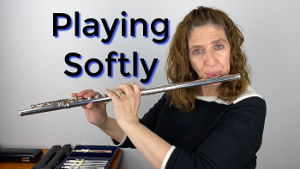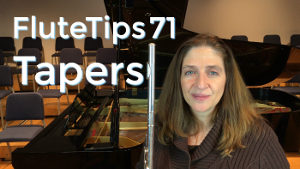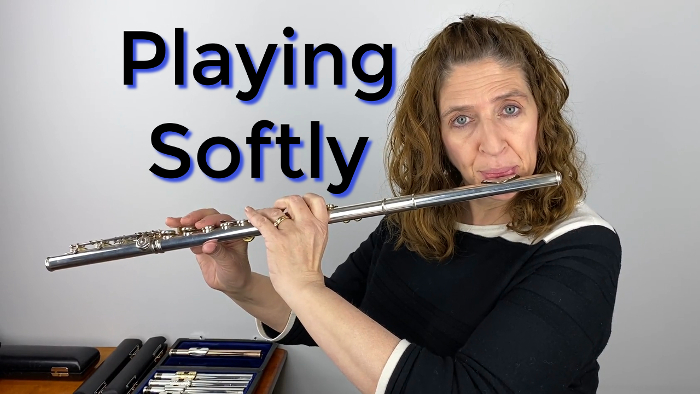Playing softly is an art that needs to be practiced all on its own. Everyone has their own way of playing softly, sometimes correctly, but more often incorrectly. The usual way of soft playing is to squeeze the embouchure. It can be quite difficult to break this habit of squeezing your embouchure to play softly. But you must, if you want to have a soft resonant tone that expresses a beautiful piano.
So, why is squeezing the embouchure a bad thing if it lets out less air, and is generally a softer tone? It does let out a lot less air. But you compromise on the quality of the sound, and the sound will be smaller not just softer. Yes when you play softly, the sound is smaller. But when done correctly, the the smaller sound carries further than does a small sound done incorrectly.
One way to begin learning how to play softly is playing long tones with crescendos and diminuendos. This teaches you the level your soft can actually get to. Plus you work on proper production at the same time. If I want a student to work on learning how to play softly without closing up their embouchure, I will start them with a forte B and they have to diminuendo over as long a period as they can.
Let’s get more specific on how you make that diminuendo.When you begin, your embouchure should be nice and open while playing a fantastic forte B. Now still use your vibrato as you begin to diminuendo. Begin to diminuendo by bringing your jaw up and out very slowly. If you have worked on tapers before it is basically a slow motion taper. The air steam pressure stays strong. But as the embouchure comes up and out, it does close up, and the air stream ceases to be quite as strong.
Think of the diminuendo as a note that has a tail. Tails get smaller as they go. The same applies to the diminuendo with a taper at the end. When we taper or diminuendo over a long period of time, we’re just drawing out that tail.
One thing to make sure is that you have enough support from your stomach muscles. You take your breath, tightening up the stomach and rib cage creating that support. Now hold on to that note and keep the pitch right where it should be. Don’t let it drop as you get soft.
I have in front of me, Toan-Yan by Ferroud, which is part of his Trois Pieces for Flute Alone. In the bottom of the first page he has written pp and then just when you think you’ve made it through playing softly, the very next phrase is pppp! If that is played with too tight an embouchure from the pp you will have nowhere to go for a pppp. However, a relaxed embouchure that is open on the inside but has a smaller aperture can control that tone and be able to make a difference between those two softs.
Another aspect of playing softly to think about is what do your lips feel like when they are playing softly? If you play a diminuendo taper where do your lips end up right before the end? The fact is they end up slightly out. My lips are out for the up-and-out part of the taper, but I stop short of completely closing off the taper at the end. When I figure this out then I can begin a section softly, because I know how to do it.
Now does the embouchure close up a little bit between a forte and a piano? Yes, I think it does. But you know what? I don’t want to think about it. I’m not really thinking about closing up, and I’m not going to tell my students, especially my younger ones to close up that embouchure. Because younger kids always go to the extreme and do it too much. I want them to think about controlling that sound with support – their air pressure – by holding that air in. They need to think about bringing their lips a little more forward, and thinking of taper.
Practice playing softly. Practice your tapers. That’ll help you get there. Do fortes and diminuendos into a piano so you can really feel how your embouchure works. It’s flexible. It moves. It is not squeezed and tight. If you are unable to hold onto that piano you probably don’t have enough air pressure or support for that note.
When you control your piano’s, it’ll make a world of difference in your solos. It’s amazing when I hear someone play a forte and then immediately play softly it’s something that makes me take notice. It can be breathtaking. Because the ability to go from a forte to a piano with nothing in between is something to admire.
Have fun working on your soft playing. It can be accomplished, and you can stay in tune while you do it.
Have fun.
DoctorFlute
Watch my video of this: FluteTips 98 Playing Softly

FluteTips 31 Learning How to Crescendo and Diminuendo


